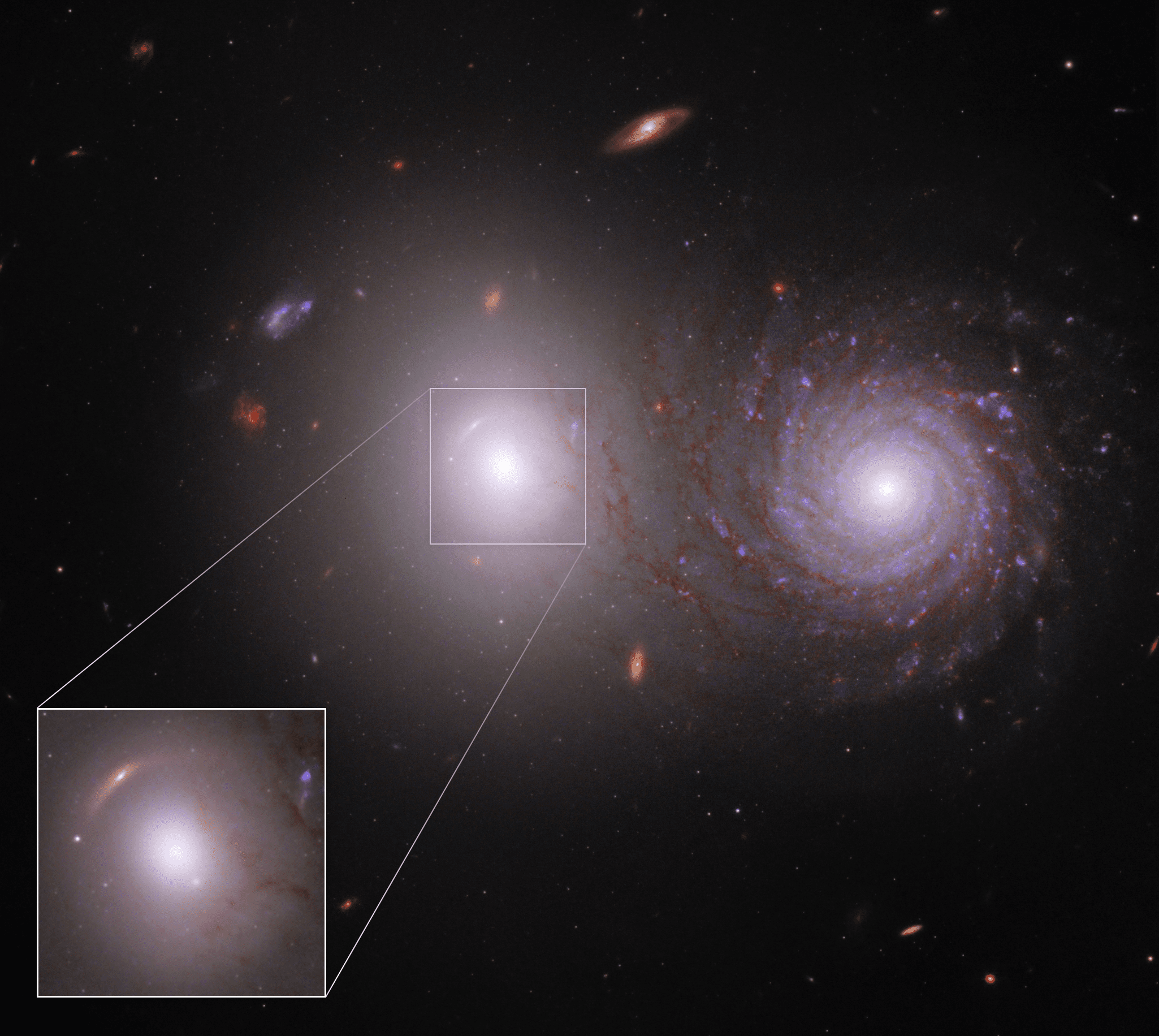By combining data from the two titans of space telescopes, Hubble and JWST, astronomers have created an incredible image of two galaxies over 700 million light-years away that reveals secrets we wouldn’t have seen by using just one.
If you see a pair of galaxies in space there’s a good chance they’re interacting, but this is not the case for galaxy pair VV191. From our line of sight, the galaxies may look like they overlap, and in this case, they are also relatively close space-wise, but they have not started the gravitational dance that leads to merging yet.
To truly appreciate their unambiguous separation, astronomers employed the two best space telescopes we have: Hubble, which sees in visible light, and JWST, which sees in infrared. While we can see the galaxy pair clearly with Hubble, their combined power allows scientists to see the overlapping regions of the galaxies in exquisite detail.
The temperature of dust in interstellar space is very low so it can only be seen in infrared, which is where the power of JWST comes in. By looking at the interstellar dust, the images reveal no hallmark of mergers. The spiral galaxy is simply in front of the elliptical galaxy. Thanks to the elliptical backlighting of the spiral, the dust structures at the edge of the galaxy are revealed.
“VV 191 is the latest addition to a small number of galaxies that helps researchers like us directly compare the properties of galactic dust. This target was selected from nearly 2,000 superimposed galaxy pairs identified by Galaxy Zoo citizen science volunteers,” JWST scientist Thaddeus Cesari wrote in a blog post.
“Understanding where dust is present in galaxies is important, because dust changes the brightness and colors that appear in images of the galaxies. Dust grains are partially responsible for the formation of new stars and planets, so we are always seeking to identify their presence for further studies.”
The lensed galaxy can be seen near the center of the elliptical galaxy in the white box highlight.
But that’s not all. If you look near the core of the elliptical galaxy you will see the red distorted object at about 10 o’clock from the center. That is a much further galaxy, whose light traveled for almost 12 billion years before reaching us. It had to pass through the elliptical galaxy whose mass is warping space-time, creating a gravitational lens.
The lens has magnified the light of this distant galaxy, not enough to be spotted by Hubble but clearly visible by the sharper infrared eye of JWST. Preliminary work suggests the presence of a second lensed galaxy though experiencing just a minor distortion, something known as weak gravitational lensing.
The preliminary study is available to read on ArXiv.org.
Source Link: JWST and Hubble's Combined Power Reveals Secrets And Surprises Of A Pair Of Galaxies
